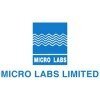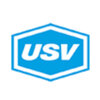Filter interviews by
Aarti Pharmalabs Interview Questions and Answers
7 Interview questions
The OOS investigation process ensures product quality by identifying and addressing deviations in testing results.
Initial Assessment: Review the OOS result to confirm it is valid and not due to clerical errors or instrument malfunctions.
Root Cause Analysis: Conduct a thorough investigation to identify potential causes, such as sample contamination or method errors.
Documentation Review: Examine relevant documents, ...
Heat of reaction is the amount of heat released or absorbed during a chemical reaction.
Heat of reaction can be exothermic (heat released) or endothermic (heat absorbed).
It is typically measured in units of energy, such as joules or calories.
Examples include combustion reactions releasing heat and photosynthesis reactions absorbing heat.
Change control is a process used to ensure that changes to a project are properly defined, evaluated, approved, implemented, and documented.
Change control involves documenting all changes to a project, including the reason for the change, the impact on the project, and the approval process.
It helps prevent unauthorized changes and ensures that all stakeholders are aware of and approve any modifications.
Examples of...
Deviation refers to the act of departing from a standard or norm. There are different types of deviations depending on the context.
Types of deviations include positive deviation (going above the standard), negative deviation (falling below the standard), and lateral deviation (moving sideways from the standard).
In project management, deviations can refer to variances from the project plan or budget.
In statistics, ...
Various tests performed in a general QC Microbio laboratory include sterility testing, endotoxin testing, microbial enumeration, and identification.
Sterility testing to ensure absence of viable microorganisms
Endotoxin testing to detect presence of bacterial endotoxins
Microbial enumeration to determine total viable count of microorganisms
Microbial identification to identify specific microorganisms present
Heat of formation is the heat energy released or absorbed when one mole of a compound is formed from its elements.
Heat of formation is the enthalpy change when a compound is formed from its elements in their standard states.
It is usually expressed in units of kJ/mol.
Negative heat of formation indicates an exothermic reaction, while positive heat of formation indicates an endothermic reaction.
For example, the heat ...
Understanding the relationship between column numbers and solvents in recovery processes is crucial for efficiency.
Columns are used in chromatography to separate compounds based on their interactions with solvents.
The number of columns can affect the resolution of the separation; more columns can lead to better separation.
Different solvents can be used to optimize the recovery of specific compounds; for example, p...
Aarti Pharmalabs Interview Experiences
14 interviews found
(2 Questions)
- Q1. What is heat of formation
- Ans.
Heat of formation is the heat energy released or absorbed when one mole of a compound is formed from its elements.
Heat of formation is the enthalpy change when a compound is formed from its elements in their standard states.
It is usually expressed in units of kJ/mol.
Negative heat of formation indicates an exothermic reaction, while positive heat of formation indicates an endothermic reaction.
For example, the heat of fo...
- Q2. What is heat of reaction
- Ans.
Heat of reaction is the amount of heat released or absorbed during a chemical reaction.
Heat of reaction can be exothermic (heat released) or endothermic (heat absorbed).
It is typically measured in units of energy, such as joules or calories.
Examples include combustion reactions releasing heat and photosynthesis reactions absorbing heat.
I appeared for an interview in Feb 2025, where I was asked the following questions.
- Q1. Quality Management System
- Q2. Risk assessment impact assessment
- Q3. Change and CAPA Management
- Q4. Product Quality Report
- Q5. Document Management system
Interview Preparation Tips
(2 Questions)
- Q1. Explain about yourself
- Q2. Explain your current job role
(2 Questions)
- Q1. Salary discussion
- Q2. Salary negotiation
(2 Questions)
- Q1. About ppe.normal overall questions.only timepass questions
- Q2. Only timepass . not seriously
Interview Preparation Tips
For 20 position Arati pharma lab settled many interviews and not selected any one.
Quality Control and Microbiologist Trainee Interview Questions & Answers
posted on 31 May 2024
I applied via Company Website and was interviewed in Dec 2023. There were 2 interview rounds.
(3 Questions)
- Q1. Why do you wish to join the QC department?
- Q2. What are the various tests performed in a general QC Microbio laboratory?
- Ans.
Various tests performed in a general QC Microbio laboratory include sterility testing, endotoxin testing, microbial enumeration, and identification.
Sterility testing to ensure absence of viable microorganisms
Endotoxin testing to detect presence of bacterial endotoxins
Microbial enumeration to determine total viable count of microorganisms
Microbial identification to identify specific microorganisms present
- Q3. In general, about experience.
Microbiology basics and some parameters were asked.
Interview Preparation Tips
- Microbiology basics
- Acceptable limits
I applied via Walk-in and was interviewed in Apr 2024. There was 1 interview round.
(2 Questions)
- Q1. Name address qualification
- Ans. Himanshu Tiwari address-jhounei darkha amethi utter pradesh
- Q2. Work experience
Interview Preparation Tips
I appeared for an interview in Jan 2024.
(2 Questions)
- Q1. What is change control
- Ans.
Change control is a process used to ensure that changes to a project are properly defined, evaluated, approved, implemented, and documented.
Change control involves documenting all changes to a project, including the reason for the change, the impact on the project, and the approval process.
It helps prevent unauthorized changes and ensures that all stakeholders are aware of and approve any modifications.
Examples of chan...
- Q2. What is Deviation and type
- Ans.
Deviation refers to the act of departing from a standard or norm. There are different types of deviations depending on the context.
Types of deviations include positive deviation (going above the standard), negative deviation (falling below the standard), and lateral deviation (moving sideways from the standard).
In project management, deviations can refer to variances from the project plan or budget.
In statistics, devia...
I appeared for an interview before Apr 2024, where I was asked the following questions.
- Q1. What is the process for investigating Out of Specification (OOS) results?
- Q2. What is an audit trail, and how many types of audit trails have you reviewed?
(1 Question)
- Q1. What is your strength and weekness
Interview Preparation Tips
I appeared for an interview before Jun 2024, where I was asked the following questions.
- Q1. Document related questions
- Q2. Safety related questions
- Q3. Professional skills
- Q4. Leadership , manpower handling
- Q5. Numbers of Column and Solvents
- Ans.
Understanding the relationship between column numbers and solvents in recovery processes is crucial for efficiency.
Columns are used in chromatography to separate compounds based on their interactions with solvents.
The number of columns can affect the resolution of the separation; more columns can lead to better separation.
Different solvents can be used to optimize the recovery of specific compounds; for example, polar ...
Interview Preparation Tips
Top trending discussions






Aarti Pharmalabs Interview FAQs
Some of the top questions asked at the Aarti Pharmalabs interview -
The duration of Aarti Pharmalabs interview process can vary, but typically it takes about less than 2 weeks to complete.
Tell us how to improve this page.
Aarti Pharmalabs Interviews By Designations
- Aarti Pharmalabs Executive Production Interview Questions
- Aarti Pharmalabs Junior Executive Interview Questions
- Aarti Pharmalabs QA QC Executive Interview Questions
- Aarti Pharmalabs QA Executive Interview Questions
- Aarti Pharmalabs Executive Interview Questions
- Aarti Pharmalabs Graduate Engineer Trainee (Get) Interview Questions
- Aarti Pharmalabs Recovery Officer Interview Questions
- Aarti Pharmalabs Senior Executive Interview Questions
- Show more
Interview Questions for Popular Designations
Overall Interview Experience Rating
based on 16 interview experiences
Difficulty level
Duration
Interview Questions from Similar Companies
Aarti Pharmalabs Reviews and Ratings
based on 162 reviews
Rating in categories
|
Executive
172
salaries
| ₹3.8 L/yr - ₹8 L/yr |
|
Senior Executive
71
salaries
| ₹5.9 L/yr - ₹12 L/yr |
|
Executive Production
50
salaries
| ₹3.5 L/yr - ₹8.4 L/yr |
|
Junior Executive
41
salaries
| ₹2.2 L/yr - ₹4.3 L/yr |
|
Deputy Manager
24
salaries
| ₹10.3 L/yr - ₹15.6 L/yr |

Hetero

Abbott

Micro Labs

GlaxoSmithKline Pharmaceuticals
- Home >
- Interviews >
- Aarti Pharmalabs Interview Questions













